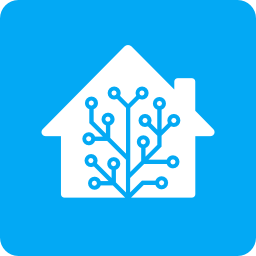First thing I do when I get a smart appliance is scan it with nmap. This has revealed some interesting Easter eggs, like my Davis instruments air quality sensors having a local REST API.
Doing the usual scan against my GE washer and dryer shows that port 53 is listening. What could that be for? Is there a way I can at least query their status locally or something?
When I got the washer and dryer I was excited about the smart home features because getting an alert when my laundry is done or starting the washer remotely so the clothes are done when I get home are genuinely useful features. However, last time I checked the app none of that was available, so I just have these Trojan horses in my home spying on me with no benefit in exchange. Their app wanted my freaking mailing address when I signed up for their mandatory account, so the features mentioned above are the least they could offer in exchange for my digital soul. But I digress.
My fridge is in a similar situation. It commits the additional cardinal sin of ONLY being controllable via the app, with no on-board temp or filter status indicators whatsoever.
Or the old fashion way, don’t BUY them.
Seriously. The dryer needs a mandatory account?
That’d be a No.
The trouble is, you don’t know how bad the shit is until after you get it home, unless you do a large amount of research beforehand.
Frankly, at this point I think the better tactic is to buy the smart appliances and then return them as “not fit for purpose,” even though that takes even more effort, because it punishes the manufacturer in a way that merely not buying the thing in the first place does not.
Read the device manuals online. It usually tells you what you need to know
They are doing their absolute best to make that impossible too.
With Bosch, who is normally a very good appliance manufacturer, you have to register your product with them to even be able to download the stripped down user manual.
It doesn’t take much effort to take an appliance model number and Google it to see the features list. People are just stupid and don’t bother to spend even 5 minutes researching their large purchases.
The information on whether it runs its own DNS isn’t on the “features list.” Or information about what microcontroller it’s running and whether it’s possible to flash with third-party firmware. Hell, even information on compatibility with Home Assistant itself usually isn’t on it! Features lists never include the sorts of information people like us care about in a smart appliance.
is checking the thing’s fucking spec sheet intensive research? do you get AI summaries of your own shopping list?
Show me where the spec sheet for a typical smart appliance tells me if it has a good integration with Home Assistant, whether I can flash it with ESPHome, etc.
Usually spec sheets only talk about a bunch of proprietary bullshit I don’t give a fuck about (or actively don’t want).
You can find out about home assistant support on the home assistant webpages.
In other words, you’re proving my point that you have to do research to find that stuff out.
deleted by creator
Show me where the spec sheet for a typical smart appliance tells me if it has a good integration with Home Assistant, whether I can flash it with ESPHome, etc.
People who use and develop integrations for Home Assistant.
Are those on the manufacturer’s spec sheet? 'Cause that’s what the comment I was replying to was talking about.
No, they often aren’t. Any that are, are not going to be permanent, either (see what Chamberlain did with their garage openers).
My personal take: unless it can function as a “smart” device without a constant connection to the internet, a company-provided HA integration is kinda useless.
i have to wonder if people even research the things they buy or if they just walk into the store with 2000€ and say “give me a washing machine”, and never see the machine until the crew comes home to install it.
It’s an expensive piece of machinery that is going to be a core part of your home for like 10 years, check the manual and online reviews to make sure it doesn’t have a major flaw you’d be unhappy with, please.
Yea, I don’t understand sales either. I drive into the BIG city and pass a new car lot that has a sign on the sidewalk that says “Ford truck month”.
I want to know WHO is driving down the street and SEES that sign then thinks to themselves “OH, I forgot to buy a truck this month”?
The sign was there for half a year.
Last month the rapture, and this month I have to buy a truck? When does it end?!
Well, he’s now on BOTH sides of a coin.
I’m gonna have to print all new BINGO cards…AGAIN!
Those messages are not aimed at everyone passing by. They are aimed at people already considering buying a truck and hope to influence their decision.
Yes, I want to know WHO this WORKS on when an OLD sign on the sidewalk can influence the second largest purchase you’ll make this decade.
Upon installation LG’s app helpfully informed me that to be notified that my LG refrigerator temperature is high or my washer’s cycle is complete I am expected to inform a Korean company of my exact location at all times. The reason LG gives for this bullshit is “analytics”. There is no way in hell.
I disconnected my LG appliances from wifi, deleted their spyware from my phone and duplicated the functions with Home Assistant. A couple of inexpensive sensors and a power monitoring plug provide almost all same functions without getting Korea (or the Internet) involved at all. Surprisingly this setup is much more reliable than LG’s spyware too.
Which sensors did you use? I like how the oven can display how many minutes left, same with the laundry stuff.
For the washer a smart plug with power monitoring. The current draw goes to almost zero when the cycle’s finished. A Zigbee vibration sensor for the dryer (or another smart plug if it’s a gas dryer) and temperature sensor for the fridge. All in they were less than $20.
I’ll have to try that smart plug idea. I have some heavy duty Z-wave plugs I used for Christmas decorations last year and that would work great for the fridge.
That’s called a CCD ;-)
Learned something today, thanks! CCD is the type of screen that’s likely on these types of devices.
A CCD is generally one of two types of camera/imaging device. I was kinda being as ass, like point a camera at the countdown on your washing machine.
That said, I’m reasonably certain I’ve seen something on the HA forum where someone did exactly that. Frigate NVR to dump a screenshot every few seconds and OCR app to create an actionable counter in HA.
A port scan and then inspection of the ports is a great habit. Another fun thing to do is to set up WireShark to listen to what your fridge’s IP address is doing. Who is it calling? How often? What services (ports)? While your fridge may have a DNS server, unless it’s been pre-loaded with the internet, it’ll need to query another DNS to reach the outside world. DNS is usually unencrypted, so you can see what it’s asking to connect to.
Many of these devices announce their services via Bonjour or whatever protocol. It’s a way for devices like Alexa to find out that you have a printer, interrogate the printer and then Alexa will tell you that your printer is low on ink and by the way, Amazon has a special sale, just for you.
If anything is unencrypted, check it out (with WireShark). If it is encrypted, there’s a chance that you can hijack it with a proxy server. Set up a SOCKS proxy and add a DNS label (I can’t remember what it is) to tell the devices in your network that you have a proxy. Block the fridge from the internet and see if it will autodetect the proxy. There are other ways to tell devices that your home network requires a proxy via autodetection & wpad.dat files in specific locations on your network. You can configure your proxy to log all traffic, like WireShark does and then see what’s in the payload.
I’ve done this with limited success on various devices. More mature products like Alexa are locked down. Those cheap home cameras from China are pretty hackable.
Have fun!
For those who are saying I shouldn’t have bought these half-baked smart appliances, I agree. But I wasn’t always this aware of the privacy issues involved. The washer and dryer were purchased before I grasped how problematic cloud-connected always online IoT devices are, and as mentioned in the OP the ability to tell me when my laundry was done seemed like a genuinely useful feature. In the case of the fridge it was an emergency replacement and we took what fit the preexisting niche in our kitchen, and the complete lack of output on the fridge itself necessitated the app.
Hey, it might help to get email aliases. Mailbox and fastmail offer them - I think most paid email services do. It helps me keep the services I have to sign up for isolated from my main email.
Apple also offer a similar service, if you so happen to own an iPhone.
Has been really useful for identifying which vendors and websites on-sold my data!
Maybe for mDNS so the app can discover the appliance.
No one needs “smart” appliances. I know it’s fun to get a message telling you your water filter needs replacing, but come on…
The fact people trust these devices to not push a replacemnt before it is actually necessary in the name of profit baffles me.
Dumb filters already push for replacements early.
Exactly
Listen man I want smart everything. I want a fridge that tells me if I left the door open and when I last replaced the filter and if the OJ is out and then automatically asks if it should add more OJ to the grocery list.
And this can all be accomplished with modern technology without sending my data to an outside entity. It should be, even if it isn’t. So much of the sci-fi future we used to dream of can be a reality today, we just have to mold it into being.
This is absolutely the most annoying part. I would be all in on smart whatevers if they worked like they should (ie respecting privacy by design). As it is, I will only buy appliances with no internet capabilities because I don’t want to spend time securing them.
My HA smartified washer & dryer save us more than an hour every week because we are informed immediately when their cycles are complete. My refrigerator temperature monitor has alerted us more than once that the door wasn’t completely closed saving us hundreds in spoiled food costs. It would do the same if the compressor fails.
Everyone has different needs and sometimes those needs include smart appliance features.
No.
I have 2 automations for my washing machine, which start when I put it in remote start mode:
- When the dryer is running it waits until the dryer’s remaining time is less than washing machine’s program ETA
- If the dryer is not running it waits until I’m returning power to the grid before starting the cycle
In that vein of thinking, nobody needs appliances.
However we are in the home assistant group so I think people are interested in linking things in their house together and controlling them centrally (if “central” does not mean the manufacturer) in an effort to make them smarter.
If you want your fridge to tell you its temp, just slap your own temp sensor in it. Put a mic by your laundry machine to detect the buzzer and alert you. DIY all the things, don’t give these “smart” appliance companies money to spy on you.
Laundry machine can be monitored reliably with a smart socket.
Here is a blueprint for HomeAssistant that has been working well: https://community.home-assistant.io/t/detect-and-monitor-the-state-of-an-appliance-based-on-its-power-consumption-v2-1-1-updated/421670
@okamiueru
For over one year now Homeassistant has been reliably announcing the end of the cycle by flashing all smart lights in RV before switching them back to their original state. What i like most is the fact that with the same reliability the washer beeps thirty seconds later.That’s cool. We do it the boring way of getting a notification to the hassio app. It unfortunately uses google’s notification api, and I’m not too happy with Google knowing when I do laundry.
The only issue I see is that getting most sensors to work in the fridge/freezer is difficult for 2 reasons, the cold fucks with the batteries and the metal body of the fridge fucks with the signal.
Simple, just drill a hole into the fridge and use a probe from outside.
/s just in case
It is a legit strategy.
Or just use thin enamelled copper wire connected to the sensor and tape it down where the door closes, no drilling required.
Yeah I’ve got a multimeter that could do it, but you would need to be careful drilling through to not hit any of the cooling jackets
I just used zigbee and put a repeater right next to the fridge. The big ass coin cells in the sonoff temp sensors are lasting around 6 months. Would probably be longer but I have the sensor with a screen in there.
Obviously YMMV if you have a SubZero or something, but in my jankey LG it works fine.
@KyuubiNoKitsune
I use cheap Aqara sensors, in fridge battery hold several months, but in freezer I have to replace them every two months. Attenuation seems to be less of a problem, at least since I switched to Homeassistant with central coordinator and my Ikea ceiling lights in virtually every room act as repeaters. I the beginning I had separate hubs for each ecosystem and consequently 4 poor Zigbee networks.
Set up a pihole on your network and add a few block lists. If your IoT appliances phone home at least you can block the traffic and monitor what things phone home.
As for buying appliances that are not smart, It takes extra effort and a trade-off in features.
For example, my toothbrush has Bluetooth in it. if I want a non-Bluetooth toothbrush I’d have to get a lower quality model because they simply don’t make one without it.
Most people buy whatever’s on sale, And considering how expensive home appliances are they usually put the expensive featured models on sale since there’s a bigger margin.
So if I wanted to get a basic one with less features, that’s not smart it would actually be more expensive because it will never go on sale.
pihole often doesn’t help, as many IoT devices either use their own DNS servers and ignore the one provided by your network, and sometimes even skip DNS completely and just connect to hardcoded IPs directly. Even blocking DNS at the firewall/router is getting more difficult with increasing use of DNS over HTTPS and custom DNS server IPs that aren’t in public lists. (I block all known DNS server IPs at my firewall, forcing any device to use my own DNS servers, but even that is not always completely effective)
It’s usually best to isolate IoT devices on VLANs with no internet access (blocked at the router/firewall) Although there are now even devices that can autonomously connect to external WiFi networks like Amazon Sidewalk, to gain internet access and bypassing any restrictions you might try to place on them…
Devices that connect to external wifi immediately gets the pliers and soldering gun treatment and a hole where their wifi chip used to be










